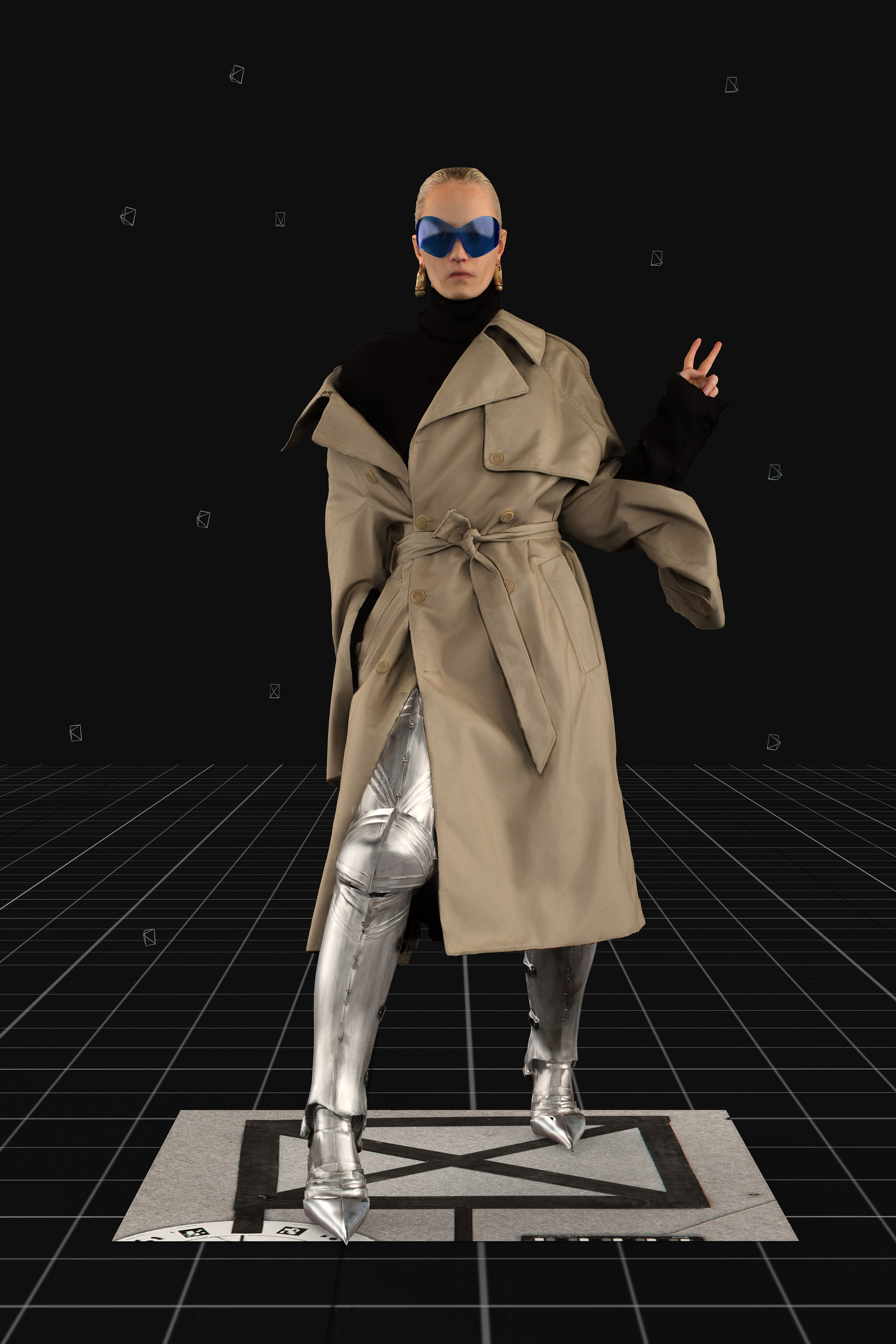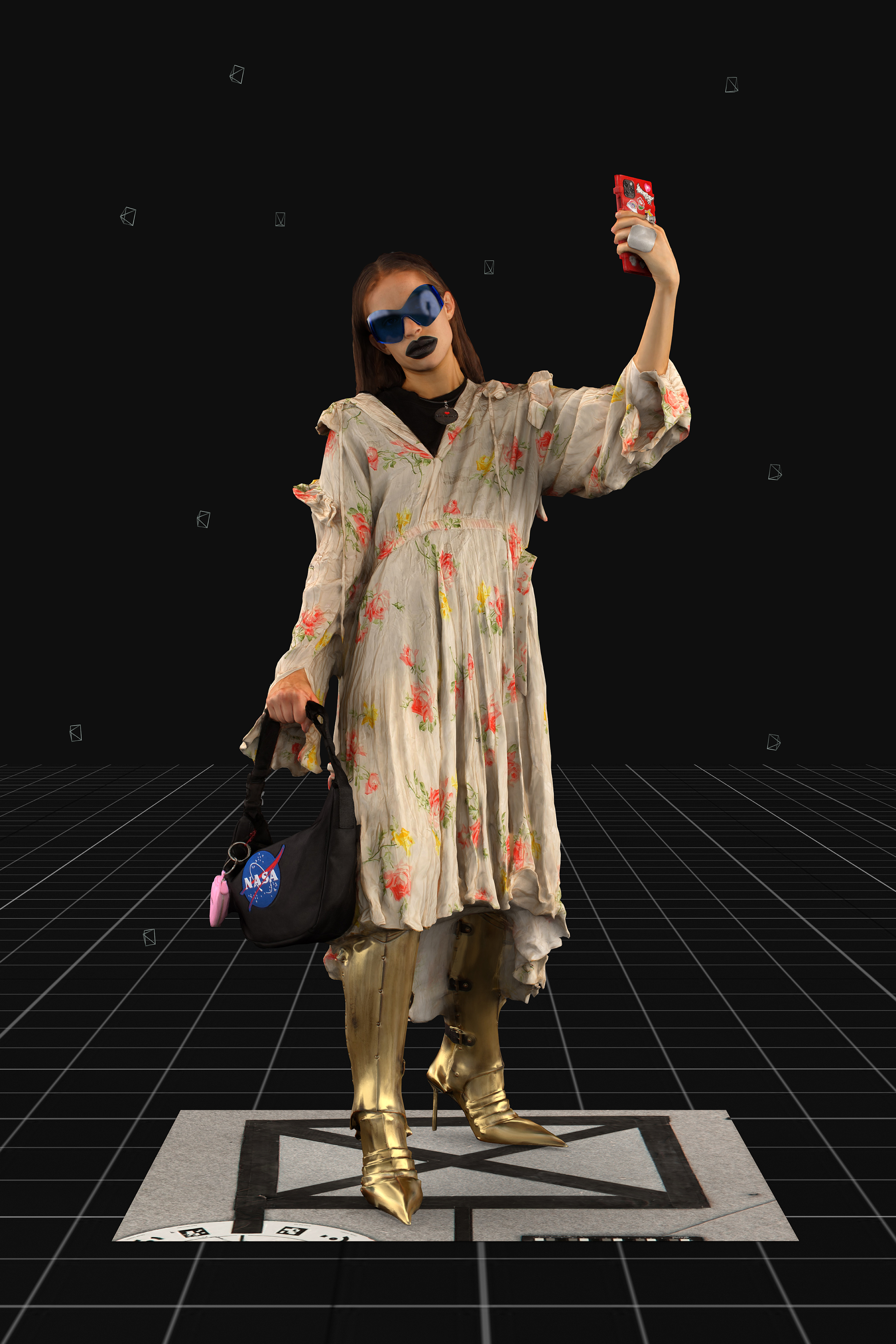News feed

Balenciaga’s creative director Demna Gvasalia’s long-running fascination with dystopian futures makes him a man particularly well-equipped to dress us in 2021. His autumn-winter ’20 show back in March featured rising water levels (the front row was engulfed) and a dizzying, rave-like soundtrack and light display. With its sinister, post-apocalyptic quality, it became eerily predictive of the strange, scary world we were about to enter.
So, how does a man so capable of looking toward the future design clothes for our totally unpredictable new world order? With VR, naturally. Rather than join his contemporaries by livestreaming a traditional runway show or creating a beautifully-shot fashion film (“I hate the idea of fashion film,” he told Vogue this morning. “I find it very dated.”), Gvasalia began working on an immersive, virtual reality-based video game. The final result, Afterworld: The Age of Tomorrow, debuted this afternoon to a select handful of press, who were sent VR headsets through which to experience the game (you can play it yourself, sans headset, here). It was within this virtual world, where digital renderings of actual clothes were modelled by digital renderings of actual models, that the new collection was revealed.

Fashion designers face the constant risk of becoming so successful that they become out of touch with the customers they are paid to design for. This has never seemed to become a problem for Gvasalia who—from his days at Vetements—displayed an uncanny ability to intuit what young shoppers are looking for. The pieces in this collection aren’t technically groundbreaking precisely because they don’t need to be. We are in a moment where people look to fashion for comfort, familiarity, and practicality. Yes, we also want escapism, but Gvaslia is betting that disappearing for a few hours into a virtual reality—one where you attend garden raves in new-season Balenciaga threads—is escapism enough.
Plus, there’s the environmental element. At the autumn winter ’20 shows in Paris and Milan this past March, the amount of clothing displayed at each collection felt ickily wasteful. Many brands have taken to overhauling their entire aesthetic every season to try and keep up with the never-ending hamster wheel of Instagram trends—and the end result is disastrous for the planet. Gvasalia has, with Balenciaga, found a sweet spot of commercially viable classics, and he cleverly updates them every season. The bold red puffer jacket, for example, has been a constant since he debuted for Balenciaga in 2015; as have boxy menswear-style blazers and coats and wide-leg shredded jeans. These staples are re-issued with slight, modernising tweaks (think assymetrical trench coats, oversized Motorcycle totes, and cartoonish candy-coloured pumps), remade in sustainable materials like shredded deadstock.

The reality is that brands like Balenciaga have always made their millions off a few bread-and-butter pieces anyway. And so what some could criticize as this collection’s over-simplicity is, to this writer, simply evidence that Balenciaga deeply knows their customer. Besides, nobody could accuse Gvasalia of a lack of creativity—the enthralling video game format is one of the few truly groundbreaking digital runways in the history of fashion month. Fashion has tried, largely unsuccessfully, to dabble in the world of virtual reality. Afterworld: Age of Tomorrow should act as an industry-standard going forward.
And it’s catering to an audience that is often ignored by the industry. “Today’s customer does gaming. It’s an important luxury customer base,” says Gvasalia. “They project so much onto their character. It’s a parallel world.” People can be reticent to talk about the particulars of making a fashion brand work—a.k.a, money—but the balancing act between creativity and commercial sales is the sole remit of today’s creative directors. Natacha Ramsay-Levi’s recent departure from Chloe has been taken as evidence that ‘cool’ designs alone cannot sustain a luxury maison. Business nous is critical, and collections like this lean further into Gvasalia’s strengths as a businessman. In a cultural moment where the world of elite fashion is grappling to stay relevant, can you blame him?









